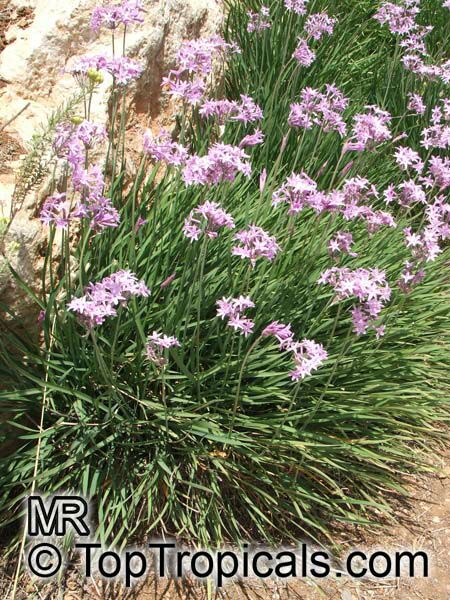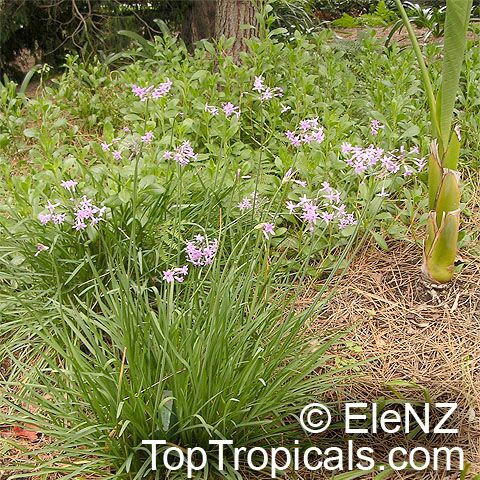Tulbaghia violacea (Wild Garlic)
Top Tropicals Plant Encyclopedia
Botanical name: Tulbaghia violacea
Common name: Wild Garlic
Family: Amaryllidaceae (Formerly:Alliaceae / Liliaceae /Amaryllidaceae)
Subfamily: Allioideae
Origin: South Africa








This is a popular garden plant that is useful for difficult hot corners of the garden as it will tolerate prolonged drought, although it flourishes with regular watering.
Tulbaghia violacea is a fast-growing, bulbous plant that reaches a height of 0.5 m. The leaves are long, narrow, strap-like, slightly fleshy and smell strongly of garlic when bruised. They grow from fat, tuberous roots which spread to form clumps of plants. The pinkish mauve, tubular flowers, clustered into umbels of up to twenty flowers, are held above the leaves on a tall flower stalk, and appear over a long period. They too smell of garlic when picked.
This attractive plant is ideal for the herb garden, as both the leaves and flowers can be used in salads and other dishes. The crushed leaves may be used to help cure sinus headaches and to discourage moles from the garden (by their strong smell). The smell repels fleas, ticks and mosquitoes when crushed on the skin.
The fresh bulbs are boiled in water and the decoctions are taken orally to clear up coughs and colds. The bulb has been used as a remedy for pulmonary tuberculosis and to destroy intestinal worms. Wild garlic may prove to have the same or similar antibacterial and antifungal activities as has been scientifically verified for real garlic. The leaves are used to treat cancer of the oesophagus.
The Zulus use the leaves and flowers as spinach and as a hot, peppery seasoning with meat and potatoes. They also use the bulb to make an aphrodisiac medicine. Wild garlic is a very good snake repellent and for this reason the Zulus plant it around their homes.








